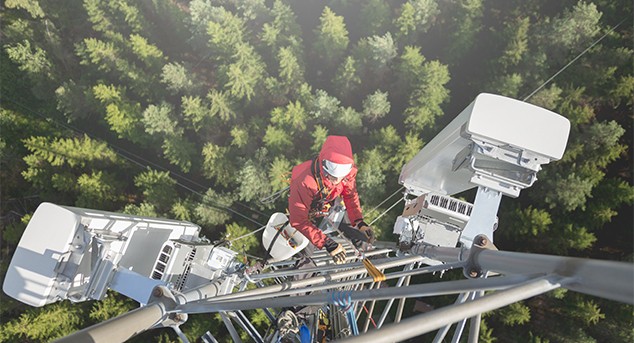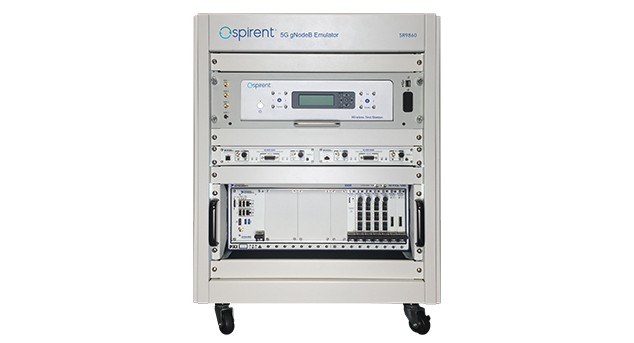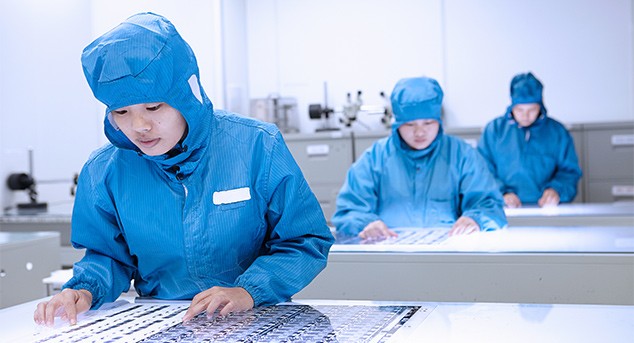
Accurately locating 5G enabled devices requires properly designed towers.
#1 Accelerating the Promise of 5G
The accuracy of your location depends on cell towers. The companies that produce these towers must ensure they’re well designed and work for the people making cellular and other smart 5G devices. Spirent helps ensure the 5G network is properly designed, and it accelerates 5G technology. It’s this technology that enables first responders to locate you quickly.
Ryan, an engineer and self-professed nerd, is motivated by solving complex technical problems and likes working with others to achieve a common goal. With a fondness for the occasional metaphor, he likens Spirent’s philosophy to building the right toolbelt for their customers. He and his colleagues don’t try to build every tool in the belt. Instead, they acquire and partner with the right companies to complete it.
Ryan believes 5G will transform the speed and accuracy with which both humans and machines interact. He also predicts that Spirent’s future will involve more than just telecommunications.
“Where 5G development is well underway, there’s a rush globally to move past non-standalone (NSA) to standalone (SA) 5G rollouts to capture revenues in industries like manufacturing, automotive, mobile gaming and beyond,” he said.

Interoperability standards must allow phones to “talk” between companies as easily as people talk face-to-face.
#3 Overcoming Unexpected Challenges
Earlier this year, an unexpected delay by the FCC forced NI and Spirent customers to pivot quickly. To understand this challenge, it helps to understand aspects of the market, not well known by people outside of the industry.
To start deployment, first the FCC needs to auction the spectrum rights. On the global stage, the major deployments for 5G are aimed at what is called the mid-band spectrum. In the US, this includes the Citizen’s Band Radio Service (CBRS). The FCC has been looking at allowing this band to be used for 5G for several years, but concerns of interfering with existing users has slowed down that action.
Late last year, the continued delays in the FCC auction triggered US carriers to generate active plans to reuse radio spectrum they had been using for 4G. To support this, Spirent needed to shift to a very different radio structure format and get it certified by the start of April 2020 for a major US carrier.
Spirent brought the challenge to meet the April validation target date to the NI team. Hong Bounpaseuth, senior staff engineer, stepped in from Spirent as a key lead in this effort. Hong lives in Dallas, a “Texas stone’s throw away” from the labs at NI’s headquarters in Austin, Texas. Hong made the 3-hour drive several times through the start of the year to sit side-by-side with the NI team. As Covid-19 lockdowns took effect in the spring, Hong built up two systems in his home and continued working with the NI team as they collectively solved one problem after another in the face of the extremely challenging logistical issues.
NI recognized that significant design and test challenges require powerful tools and was committed to connecting designers and test engineers to ensure the two companies developed an offering to support their customers.

Spirent's 8100 5G Mobile Device Test System incorporates NI's leading-edge SDR platform
#4 Tolerate Partial Successes Along the Way
Innovations require testing to enter the market reliably and sustainably. Ryan attributes part of Spirent’s success to being open to tolerating partial successes: “Often, a small win is the steppingstone to the next big breakthrough.”

– Clarke Ryan, Senior Director of Product Development, Spirent
Ryan also compares today’s telephone network to a pyramid that’s about two miles high, a sharp departure from what it was like when he began his career in 1977.
“There are about 10 levels of abstraction between being ‘down in the dirt’ in electronics and being ‘up in the cloud.’ No one on Earth can cognitively understand all those levels stacked on top of each other. You need a framework, so you can regression test, make a small change, and then regression test again. Small changes cause small problems that you can address. If you put all those changes in at once, you’ll never understand what the problem was. You need to ensure the design is working properly and iterate quickly. Testing breaks down that complexity.”

Advances in 5G will improve safety for travelers.
#5 Bigger, Bolder Advancements
Spirent’s 5G device capabilities are built on NI’s software defined radio (SDR) platform. Ryan shared that integrating NI SDR helps Spirent adapt their systems quickly even as standards evolve.
Ryan concluded by sharing the ways in which Spirent and others Engineer Ambitiously to improve the accuracy of location services, including adding elevation information. This exciting area of development has implications for you and your safety.
“If someone’s stuck in a 30-story building engulfed in flames, a firefighter will want to know what floor they’re on. We also want to know what floor a firefighter is on if he or she stops responding. We’re not there yet, but this is where we’re headed. And that’s just one example of our intent to Engineer Ambitiously for the welfare of all.”










